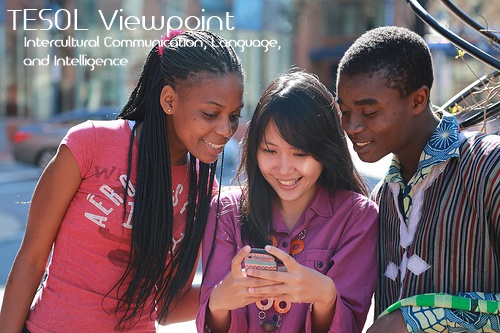Interdependence of people and cultures in the global society of the twenty-first century means all citizens of the world must pay greater attention to inter-cultural communication, and the challenges it brings.
Inter-cultural communication is the communication between people from different cultures. These groups may be defined by their nationality by geographical boundaries by the ethnicity or religion by their occupation, class status or gender. Inter-cultural communication research has developed through various disciplines namely the behavioral sciences, anthropology and the language science. The Term, Inter-cultural communication became prevalent in TESOL only in the 1980s.
Language is not merely a manifestation of intelligence. Language is a requisite component of intelligence. Complete thinking in the abstract is unattainable without the capacity of symbolic representation of concepts. There are three fundamental linguistic components of intelligence. These are: Sentience, Mnemonics and Cognizance.
Sentience is the acquisition of external information. When an entity senses, it represents external reality internally, in a manner that is other than the reality itself. This process therefore constitutes language use, for purposes of depicting reality or that which is.
Mnemonics entails refers to the lingering remnants of internal depiction of the external. Language or the symbolic rendering of reality is once again employed. Errant access of memory reflects either inaccurate storage or inaccurate retrieval of symbols. Whether accurate or not the lynch-pin of memory is language.
Dolphins from language through an array of clicks and tones that is intelligible to other dolphins. The ability to convey ideas in this manner allows complex hunting practices involving group behavior. Much discussion has been conducted regarding the role of a prehensile digit, (the thumb) in the role of human development, particularly with respect to tool making. This capacity has been cited as the developmental advantage that separates human beings from other creatures.
The use of language, complex and abstract has played an even larger role with respect to intelligence. A person that has not gained linguistic skill is often regarded as sub-human.
Language is the very foundation of intelligence, because language is at the Essence of perception, memory, thought and communication. And it consists of both the fabric and the underpinnings of intelligence.
Language is therefore the fundamental human foundation for knowledge and learning or the peculiar expression of man.
TESOL Viewpoint brings alumni essays on teaching English as a second language. This viewpoint focuses on intercultural communication, language, and intelligence.



